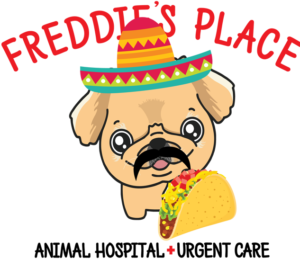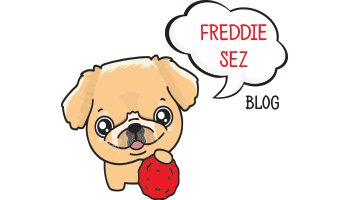 What is Veterinary Acupuncture, and is it right for my pet?
What is Veterinary Acupuncture, and is it right for my pet?
Acupuncture is not something new, it has been around in the Chinese culture since 2500 bce (before common era). Acupuncture has been used on animals for more than 4000 years. It is one of four parts that make up Traditional Chinese Veterinary Medicine (Acupuncture, Herbal medicine, food therapy, & Tui-na or medical manipulation). It was introduced in the United States in 1974, coinciding with Richard Nixon’s trips to China that opened up the Chinese culture to our country. As our pet population has grown, the number of animal clinics and hospitals have increased, and understanding of the benefits acupuncture can bring to animals has spread, the demand and desire to become certified in this field has expanded as well. However, not everyone can pull out a bunch of needles and start poking around your pets, there is a lot of work and dedication that goes into becoming certified.
What does it take to be a Certified Veterinary Acupuncturist?
Currently there are over 150,000 veterinary acupuncturists around our country. This is a highly specialized field that requires specific training, classroom and hands on education, and there are only a few places that can provide this type of certification. Only licensed veterinarians can become certified to perform veterinary acupuncture. To enter the needed training to be certified, you must show a work history in the veterinary field. From there, qualified individuals must go through course work that consists of online learning, onsite seminars and visual examples of the practice, then actually insert needles into animals during the training. Once the course work and hands on training is complete, the veterinarian pass a final exam, intern for 30 or more hours with someone certified in veterinary acupuncture, and submit a case report to documents what they experienced to check their understanding. Once this has all been completed, they can apply and obtain a certificate to practice veterinary acupuncture. Based on the workload and dedication to the craft, this is not a “spur of the moment” choice one makes.
So, Exactly How Does Veterinary Acupuncture Work?
The easy description of acupuncture is the insertion of thin, sterile needles into very specific and mapped out anatomical locations called “acupoints.” The goal is to generate a therapeutic effect in the body of the subject. The ancient Chinese discovered 361 points of insertion on a human body and 173 points on animals. Horses were among the first animals to experience animal acupuncture, as history shows ancient Chinese doctors witnessed horses shot with arrows recovered quickly from that type of wound, from there they experimented and discovered the acupoints and how using them helped with many common issues of the time. The use of acupuncture on dogs dates back to 300BC and the Tang Dynasty in Mesopotamia.
Today’s veterinary acupuncture consists of inserting needles (either arrowheaded or fine point) into the targeted acupoint. Once inserted, the needles may be twisted or twirled, or connected to a low-voltage alternating current source. The acupoints are often a considerable distance from the actual point they are to act on. Acupoints impact specific points, or zones, on the body. An example is that an insertion point on the thumb of a human is designed to produce an analgesic effect in the abdomen. The thumb bone is not connected to the stomach bone… but with acupuncture, the nerve endings have a different delivery system. Due to the release of beta-endorphins, serotonin, and other neurotransmitters, acupuncture promotes pain relief, speeds up tissue healing, helps regulate gastrointestinal issues, reduces inflammation, helps to boost the immune system, and helps with hormone and reproductive difficulties.
How do I Know if Acupuncture is Right for My Pet?
The symptoms or diagnosis must be a match for the healing and helping powers of acupuncture. If your pet suffers from muscle soreness, chronic pain, osteoarthritis or degenerative joint disease, neurological disorders such as paralysis or seizures, gastrointestinal issues like extreme/consistent diarrhea/gastric ulcers/vomiting/constipation/impacted bowel, or they show signs of geriatric weakness, they might be a prime candidate for the procedure. Veterinary acupuncture also assists with maintaining a quality of life for those pets in hospice care. Meeting with a qualified DVM/CAV can determine if you fur kids would benefit from acupuncture.
Does it Hurt my Pet?
Your average dog, cat, rabbit, ferret, duck or weasel would feel little to no pain at all when needles are inserted. Large animals like horses, cows, your pet elephant or ostrich might feel some pain due to the larger needles needed to penetrate their skin. Regardless of the animal or size of the needle, once inserted they should feel no pain. In fact, most animals begin to feel very relaxed and will likely just take a nap during the process. There are cases where animals have tingles, cramps, or numbness that will cause panic or discomfort, but they are in no danger. This is also true with humans.
After the treatment, and for the following 24 to 48 hours that follow, your pets condition may actually seem worse. Some animals are prone to sleeping long periods or seem lethargic. These effects are actually showing that some physiological changes are happening and the animal is accepting the treatment. These early phases are normally followed by improvement in their condition.
Is Acupuncture Safe?
Like in their human counterparts, the majority of animals treated with acupuncture show improvement. It’s critical that the procedure only carried out on a patient with a referral and diagnosis from a qualified veterinarian. Veterinary acupuncture must only be administered by, or under the guidance of, a Certified Acupuncture Veterinarian (CAV). In certain cases, animals feel so much better that they over extend themselves. This could delay healing or make the original condition worse.
In the majority of cases the right diagnosis, followed by the acupuncture session with a CAV, will be a success and help the pet with their issues.
How Many Sessions will my Pet Need?
There is no cookie cutter answer to this question. It depends on what is being treated, what method of acupuncture is being used, and how the animal accepts the treatment. A simple sprain would likely only take one treatment to assist in pain reduction, blood flow, and healing. A “quality of life” patient in hospice is likely to need multiple sessions. Your veterinarian could better answer this question for your pet and their diagnosis. Plan on each session lasting 35 to 45 minutes, with the first session being longer. If more than one treatment is needed, they will likely be spaced out 1-2 weeks apart.
How much Does Acupuncture Cost per Treatment?
As with anything else in veterinary medicine, the costs will vary by hospital/doctor/CAV/size of animal. Ask your veterinarian for a written estimate of costs prior to agreeing to the procedure. Click here to see our costs.
New Discoveries
As veterinary medicine changes and more pets are diagnosed with certain types of illnesses, acupuncture has been implemented in treatments. Many veterinarians are now pointing patients towards acupuncture for Cancer treatment, as it helps with side effects such as nausea and pain. With Dog Shows, Dog Sports, and a more active dog lifestyle “Sports Strains” are becoming a larger concern. Acupuncture is often suggested to help relieve these aches, pains, and boost the bodies regenerative processes. Lastly, Anxiety in pets is becoming a bigger issue. The “just a dog” has been replaced with a pamper pooch. Too much attachment, things like fireworks or “stranger danger” can lead to doggy anxiety or Separation Anxiety. Acupuncture is being routinely suggested to these patients, as it can help calm the mind and body.
Freddie’s Place is fortunate to have our own DMV/CVA on staff. Doctor Chanel Redden is well versed in veterinary acupuncture, has studied and trained at the Chi Institute of Traditional Chinese Veterinary Medicine. She is fully certified and experienced in the art of animal acupuncture. Having her on our staff makes Freddie’s Place the Place to be for veterinary acupuncture in the San Diego area.
Veterinary Acupuncture is not a cure all for every condition. However, it is a reliable method to help the areas of pain management, neurological disorders, gastrointestinal issues, helping to maintain a quality of life for a patient in hospice, assisting with Cancer treatment side effects, Sports strains, and now treatment of acute anxiety in animals. Don’t hesitate to ask your veterinarian if veterinary acupuncture is right for your pets condition.
We hope this deep dive into the world of Veterinary Acupuncture has been enlightening to all of our readers. It’s strange that, with all the advances in medications/surgeries/treatments that today’s modern veterinary medicine has uncovered, we see the steady rise in a 2000 year old treatment as an alternative method to help animals in need. We guess it just goes to show that “out with the old and in with the new” may not always be the best course of action.
For all of us at Freddie Central, until next week when the Hemingway of Hounds drops his new Dog Blog, we hope this upcoming week/weekend is fun, safe, emergency free, and above all else, Pet Friendly! Be good to each other and all animals… #FreddieSez.





Leave A Comment